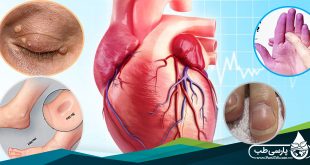Diabetes develops when your pancreas can no longer produce insulin in sufficient quantity, or your body becomes less sensitive to the insulin you produce. Without enough effective insulin, your blood sugar levels can get out of control. High blood glucose (hyperglycemia) is most common in type 2 diabetes. But any person with diabetes can have bouts of high blood sugar. Lowering your blood sugar is crucial to both short-term and long-term diabetes management. When left untreated, hyperglycemia can cause:
- eye damage
- cardiovascular disease
- kidney failure
- nerve damage (neuropathy)
- skin and gum infections
- joint problems
- diabetic coma
Know Where You Stand
Many people with diabetes can detect hyperglycemia. According to the Mayo Clinic, signs of high blood sugar start to develop when levels reach more than 200 mg/dL. Some common symptoms include:
- sudden, excessive fatigue
- severe headaches
- blurry vision
- increased urination
- abdominal pain
- nausea
- dry mouth
- confusion
The goal is to prevent hyperglycemia before it starts. It can develop suddenly, but in many cases high blood sugar develops over the course of several days. Symptoms worsen the longer you experience elevated blood sugar. The key is knowing where your blood sugar levels stand. Regular blood glucose monitoring is essential, especially in type 2 diabetes. The American Heart Association(AHA) recommends a range of 70 to 130 mg/dL before meals, and blood glucose less than 180 mg/dL after eating.
Dieting for Diabetes
Dietary changes are among the first actions taken by diabetics. Not only does a healthy diet make you feel good, but you can also lower your blood sugar during the process. Carbohydrates are often a source of criticism because they affect glucose more than any other food group. But it’s important to know that some healthy carbs can actually raise blood sugar. One way to formulate a healthy diabetes diet is by concentrating on low glycemic index (GI) foods. Low-GI foods are less likely to increase blood sugar. Examples include:
- steel cut oats
- stone-ground wheat
- non-starchy vegetables
- beans
The highest GI foods include:
- white rice
- white bread
- popcorn
- instant oatmeal
- pumpkin
When preventing and controlling hyperglycemia, you should limit high-GI foods. If you do decide to splurge, accompany a high-GI food with a low-GI version. This should only be done if your blood sugar is in the normal range.
Paying attention to GI is just one healthy diet change that can improve high blood glucose. Portion control is also important. Overeating can lead to sugar spikes. You can also limit junk food and processed foods to achieve lower blood glucose. Such items contain added sugars that can derail any diabetes eating plan. You will likely see a difference in blood glucose if you focus on whole foods.
Exercise to Lower Blood Sugar
Regular exercise complements a healthy diet, and diabetes is no exception. Moderate activity can lower your blood glucose and help your body process foods more efficiently without causing sugar spikes. The AHA recommends at least 30 minutes of activity per day for at least five days a week. Moderate exercises can include:
- brisk walking
- swimming
- bike riding
- using an elliptical machine
Consider monitoring your blood glucose before and after exercise, just like you do before and after meals. This can give you a better sense of how effective exercise is in lowering blood sugar. Such readings can also tell you whether or not you need to adjust insulin intake. If your blood sugar level is very high (above 300 mg/dL), refrain from exercising and seek medical advice from your doctor. If your blood sugar level is above 350 mg/dL or if “ketones” (acids that your body produces if there’s a shortage of insulin in the blood and your body is forced to use fats instead of carbohydrates for energy) are noted in your urine, you should call 911.
Discuss Your Current Treatment Plan with Your Doctor
Diet and exercise are the two ways you can naturally lower blood glucose. A healthy lifestyle can also help you lose weight. Obesity is a common risk factor for the development and severity of type 2 diabetes.
But diet and exercise aren’t always enough for diabetics. Managing high blood sugar is accomplished with medications and insulin treatments. A healthy lifestyle can do wonders, but is primarily viewed as a complementary diabetes treatment measure.
If you still experience high blood sugar despite treatment, it may be time to talk to your doctor about increasing your insulin intake. The timing of dosages can be adjusted to combat sugar spikes before they occur. Just as the severity of diabetes varies, every patient’s treatment plan is different. Work with your doctor to help find the best plan for you.
 Parsi Teb Physical and Mental Health Journal
Parsi Teb Physical and Mental Health Journal 



